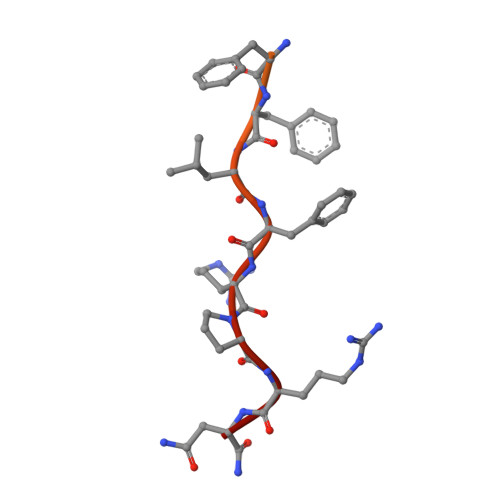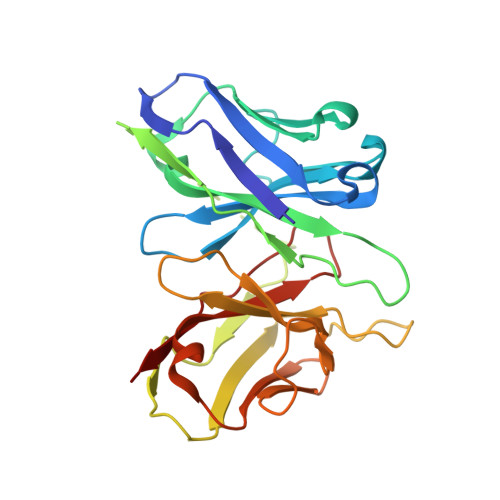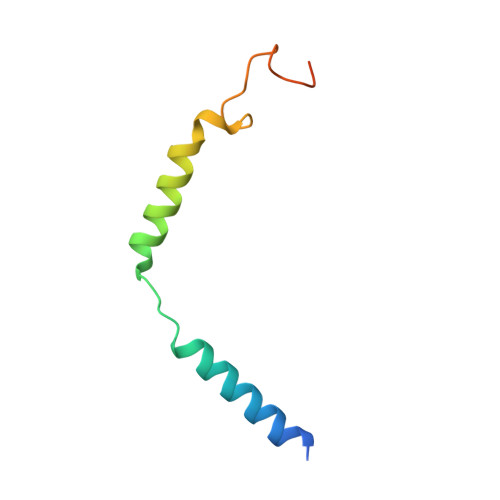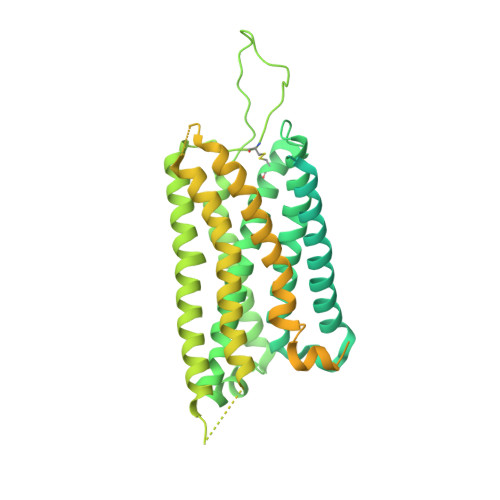Structural insights into the peptide selectivity and activation of human neuromedin U receptors.
You, C., Zhang, Y., Xu, P., Huang, S., Yin, W., Eric Xu, H., Jiang, Y.(2022) Nat Commun 13: 2045-2045
- PubMed: 35440625
- DOI: https://doi.org/10.1038/s41467-022-29683-w
- Primary Citation of Related Structures:
7W53, 7W55, 7W56, 7W57 - PubMed Abstract:
Neuromedin U receptors (NMURs), including NMUR1 and NMUR2, are a group of G q/11 -coupled G protein-coupled receptors (GPCRs). NMUR1 and NMUR2 play distinct, pleiotropic physiological functions in peripheral tissues and in the central nervous system (CNS), respectively, according to their distinct tissue distributions. These receptors are stimulated by two endogenous neuropeptides, neuromedin U and S (NMU and NMS) with similar binding affinities. NMURs have gathered attention as potential drug targets for obesity and inflammatory disorders. Specifically, selective agonists for NMUR2 in peripheral tissue show promising long-term anti-obesity effects with fewer CNS-related side effects. However, the mechanisms of peptide binding specificity and receptor activation remain elusive. Here, we report four cryo-electron microscopy structures of G q chimera-coupled NMUR1 and NMUR2 in complexes with NMU and NMS. These structures reveal the conserved overall peptide-binding mode and the mechanism of peptide selectivity for specific NMURs, as well as the common activation mechanism of the NMUR subfamily. Together, these findings provide insights into the molecular basis of the peptide recognition and offer an opportunity for the design of the selective drugs targeting NMURs.
- The CAS Key Laboratory of Receptor Research, Shanghai Institute of Materia Medica, Chinese Academy of Sciences, Shanghai, 201203, China.
Organizational Affiliation:





















